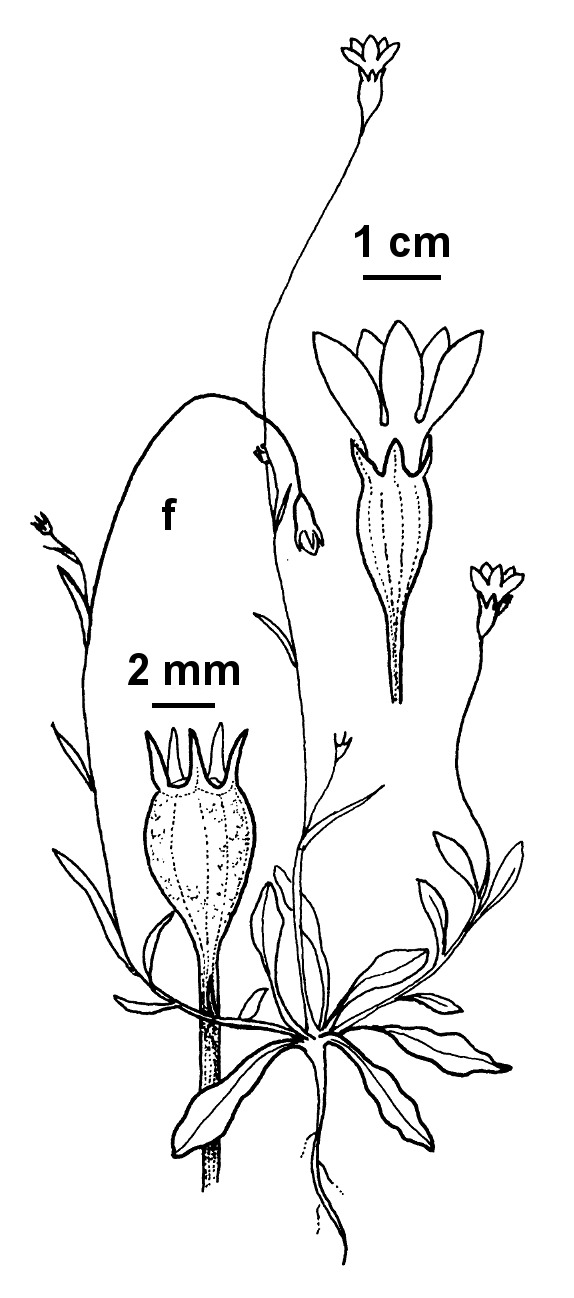Wahlenbergia tumidifructa
P.J.Sm. Mallee Annual-bluebellSingle- or few-stemmed annual (rarely perennial), commonly glabrous, or with scattered coarse hairs near base; stems ascending to erect, 5–40 cm long, simple or few-branched, often leafless in upper half; leaves alternate (or basal 1–2 pairs opposite) obovate to narrow-elliptic near base, to linear above, 2–50 mm long, 0.5–10 mm wide; margins entire or weakly callus-toothed. Hypanthium globose to obovoid, 1–3 mm long, glabrous; calyx-lobes erect, narrow-triangular, 1–4 mm long, glabrous; corolla campanulate, pale blue, tube 1–5 mm long, from shorter to longer than calyx-lobes, lobes elliptic to obovate, 2–5(–6.5) mm long, 1–3.5 mm wide, acute; style 2.5–6 mm long, not or indistinctly constricted near midway, lobes 3, linear. Capsule plump, globose to obovoid, 2.5–9 mm long, 2–4.5 mm wide. Flowers mostly Sep.–Oct.
LoM, MuM, Wim, GleP, MSB, RobP, MuF, DunT. All mainland states. Apparently rather rare in Victoria, recorded from sandy flats and shallow depressions in the Big Desert and Hattah-Kulkyne area, and on black soils of the floodplain of the Murray River between Barmah and Strathmerton.
Older, unvouchered records from mallee areas of the closely related W. gracilenta may relate to this taxon.
Walsh, N.G. (1999). Wahlenbergia. In: Walsh, N.G.; Entwisle, T.J., Flora of Victoria Vol. 4, Cornaceae to Asteraceae, pp. 554–563. Inkata Press, Melbourne.
 Spinning
Spinning


